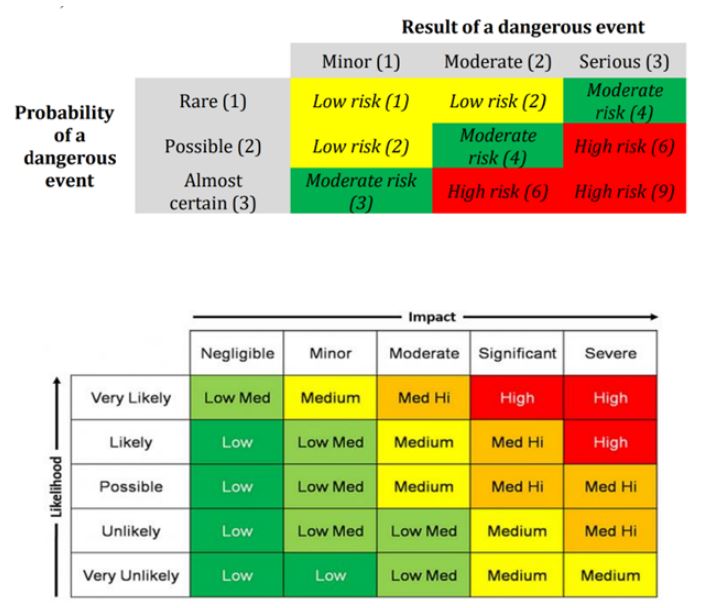Once risks have been analyzed and quantified, they can then be evaluated and prioritized. This part of the risk assessment process involves evaluating the risks based on their magnitude and likelihood of occurrence. This can be done in many ways, but a straightforward way to achieve this is to create a risk evaluation matrix:

A risk matrix can help assess each potential risk that an organization has identified or is concerned about and provide a helpful tool to determine and evaluate priorities. The risks that score the highest are the risks that should be prioritized. Many businesses will have already gone through similar processes for other types of business risks and can be easily replicated for climate change-related risks and impacts. How risks are prioritized will also depend on a company’s risk appetite and coping capacity[1]. Some risks might be deemed acceptable like a 25-year storm, while others might be debilitating if they occurred, like a 100-year storm – calling for immediate action. Once the risks that climate change present to an organization are evaluated and prioritized, the organization will then be in a better position to act.
Metrolinx, a public transportation authority in Ontario, experienced two back-to-back climate-related disasters in 2013 that they were ill-prepared for: a flooded train and washouts along the tracks and an ice storm that caused a power outage. To better understand their vulnerabilities and adapt to future climate risks, Metrolinx created a climate adaptation strategy utilizing the PIEVC Protocol to six of the agency’s core assets. To learn more about Metrolinx’s climate risk assessment, refer to their Case Study featured in this Resource Kit.
Bottom Line
it is very helpful to evaluate your climate-related business risks by using tools such as a risk matrix. Once the risks that climate change present to an organization are evaluated and prioritized, the organization will then be in a better position to act.
Partners in Project Green’s Building a Climate Resilient Business Resource Kit provides a foundation in the basics of current climate science, the impacts of climate change on businesses, and mitigation and adaptation strategies. Please explore these resources and connect with us to advance your organization’s climate resiliency.
To learn more about climate change adaptation, check out:
[1] Arnell, N. 2015. A Short Guide to Climate Change Risk. Routledge, 1st Edition.

